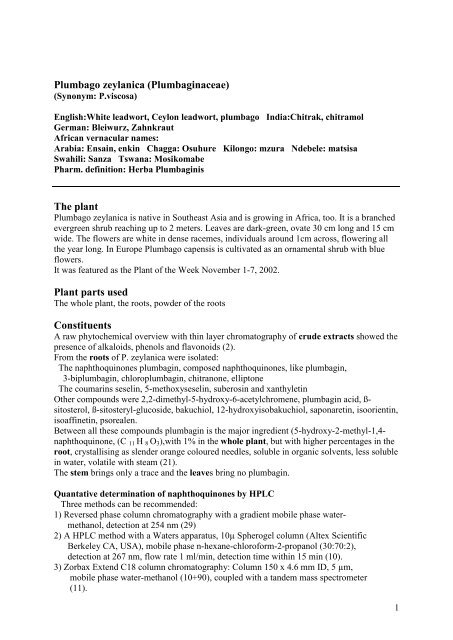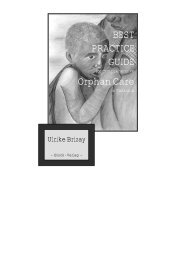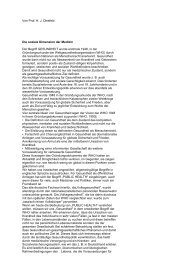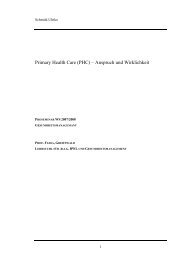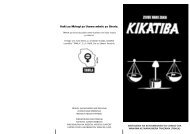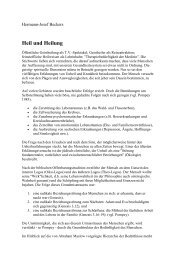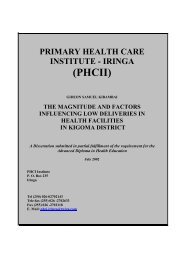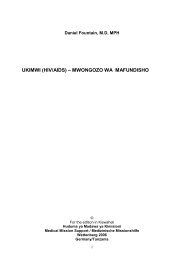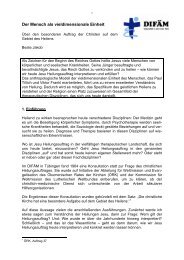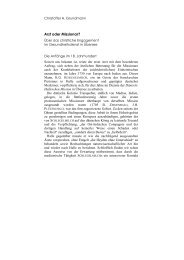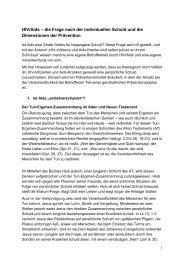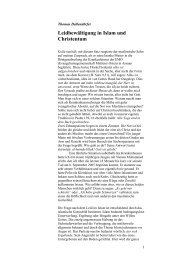Plumbago zeylanica (Plumbaginaceae) The plant Plant ... - MMH/MMS
Plumbago zeylanica (Plumbaginaceae) The plant Plant ... - MMH/MMS
Plumbago zeylanica (Plumbaginaceae) The plant Plant ... - MMH/MMS
You also want an ePaper? Increase the reach of your titles
YUMPU automatically turns print PDFs into web optimized ePapers that Google loves.
<strong>Plumbago</strong> <strong>zeylanica</strong> (<strong>Plumbaginaceae</strong>)<br />
(Synonym: P.viscosa)<br />
English:White leadwort, Ceylon leadwort, plumbago India:Chitrak, chitramol<br />
German: Bleiwurz, Zahnkraut<br />
African vernacular names:<br />
Arabia: Ensain, enkin Chagga: Osuhure Kilongo: mzura Ndebele: matsisa<br />
Swahili: Sanza Tswana: Mosikomabe<br />
Pharm. definition: Herba Plumbaginis<br />
<strong>The</strong> <strong>plant</strong><br />
<strong>Plumbago</strong> <strong>zeylanica</strong> is native in Southeast Asia and is growing in Africa, too. It is a branched<br />
evergreen shrub reaching up to 2 meters. Leaves are dark-green, ovate 30 cm long and 15 cm<br />
wide. <strong>The</strong> flowers are white in dense racemes, individuals around 1cm across, flowering all<br />
the year long. In Europe <strong>Plumbago</strong> capensis is cultivated as an ornamental shrub with blue<br />
flowers.<br />
It was featured as the <strong>Plant</strong> of the Week November 1-7, 2002.<br />
<strong>Plant</strong> parts used<br />
<strong>The</strong> whole <strong>plant</strong>, the roots, powder of the roots<br />
Constituents<br />
A raw phytochemical overview with thin layer chromatography of crude extracts showed the<br />
presence of alkaloids, phenols and flavonoids (2).<br />
From the roots of P. <strong>zeylanica</strong> were isolated:<br />
<strong>The</strong> naphthoquinones plumbagin, composed naphthoquinones, like plumbagin,<br />
3-biplumbagin, chloroplumbagin, chitranone, elliptone<br />
<strong>The</strong> coumarins seselin, 5-methoxyseselin, suberosin and xanthyletin<br />
Other compounds were 2,2-dimethyl-5-hydroxy-6-acetylchromene, plumbagin acid, flsitosterol,<br />
fl-sitosteryl-glucoside, bakuchiol, 12-hydroxyisobakuchiol, saponaretin, isoorientin,<br />
isoaffinetin, psorealen.<br />
Between all these compounds plumbagin is the major ingredient (5-hydroxy-2-methyl-1,4naphthoquinone,<br />
(C 11 H 8 O3),with 1% in the whole <strong>plant</strong>, but with higher percentages in the<br />
root, crystallising as slender orange coloured needles, soluble in organic solvents, less soluble<br />
in water, volatile with steam (21).<br />
<strong>The</strong> stem brings only a trace and the leaves bring no plumbagin.<br />
Quantative determination of naphthoquinones by HPLC<br />
Three methods can be recommended:<br />
1) Reversed phase column chromatography with a gradient mobile phase water-<br />
methanol, detection at 254 nm (29)<br />
2) A HPLC method with a Waters apparatus, 10µ Spherogel column (Altex Scientific<br />
Berkeley CA, USA), mobile phase n-hexane-chloroform-2-propanol (30:70:2),<br />
detection at 267 nm, flow rate 1 ml/min, detection time within 15 min (10).<br />
3) Zorbax Extend C18 column chromatography: Column 150 x 4.6 mm ID, 5 µm,<br />
mobile phase water-methanol (10+90), coupled with a tandem mass spectrometer<br />
(11).<br />
1
For the determination of the root extract the first method seems to be the best one.<br />
A bioassay-guided fractionating of the dichloromethane extract of aerial parts from P.<br />
<strong>zeylanica</strong> led to the isolation of fl-sitosterol, fl-sitosteryl-3fl-glucopyranoside-6`-O-palmitate,<br />
lupenone, lupeol acetate, plumbagin, and trilinolein (17).<br />
Traditional uses<br />
In the Ayurvedic and Sidda medicine P. <strong>zeylanica</strong> has been assigned medical properties and is<br />
used in formulations for Ayurvedic medicines:<br />
In India against fever and malaria, against diarrhoea, dyspepsia, piles, and skin diseases<br />
including leprotic lesions (10), in Nepal as an antiviral medicine, in Taiwanese folk medicine<br />
for anti-Helicobacter activity, in Assam for family planning and birth control and permanent<br />
sterilization (26,13); In Northwest-Ethiopia for treatment of gastro-intestinal complaints (9),<br />
in South-Western Nigerian folk medicine against parasitic diseases, scabies and ulcers (10).<br />
In Madras (India), Amrita Bindu, a salt-spice-herbal mixture, is used as an antioxidant (16).<br />
Results of experimental studies<br />
Antibacterial and antimycotic activity<br />
Alcoholic crude extracts of P. <strong>zeylanica</strong> were investigated for their ability to inhibit the<br />
growth of multiresistant (16-23 fl-lactam antibiotics) strains of E. coli and Shigella. Compared<br />
with other <strong>plant</strong> extracts they showed high activity with MIC value of 0.64-10.24 mg/ml.<br />
After fractionating the ethyl acetate fraction exhibited the highest potency (with a lower<br />
MIC). <strong>The</strong> <strong>plant</strong> extracts tested in vitro for haemolysis in sheep erythrocytes had no activity<br />
(2).<br />
Antibiotic resistant strains of E. coli and Staphylococcus aureus, inoculated in an antibiotic<br />
(streptomycin, rifampicin) medium showed a delayed growth due to the resistance. However,<br />
the growth was completely prevented when the bacteria were grown in the medium with<br />
antibiotic and plumbagin (7).<br />
Infections with Helicobacter pylori were inhibited in vitro by ethyl acetate extracts of P.<br />
<strong>zeylanica</strong> with a minimum bactericidal concentration (5.12 - 20.48 mg/ml). <strong>The</strong> bactericidal<br />
activity appeared in a dose-dependent manner (29). In rats and mice roots of P. <strong>zeylanica</strong> so<br />
called chitrak, added to the feed increased the growth of coliform bacteria for 5 %,<br />
significantly, similar to mexaform (Geigy).<br />
Authors call chitrak an intestinal flora normalizer (12).<br />
When tested against the resistant strain of Mycobacterium tuberculosis (H37RV) the<br />
inhibitory activity of Plumbagin was
Cytotoxicity<br />
Beta-sitosterol and plumbagin isolated by a bioassay guided fractionation of the<br />
dichloromethane extract from aerial parts of P. <strong>zeylanica</strong> were toxic against the cancer cell<br />
lines:<br />
fl-sitosterol against MCF7 and Bowes cancer cell lines (IC50 113µM and 152µM) and<br />
inhibited Bowes cell growth with IC50 36.5 µM).<br />
Plumbagin was toxic against MCF7 and Bowes cells (IC50 1.28µM, and 1.39µM) (17).<br />
In Swiss albino mice the activity of plumbagin was investigated on mouse bone marrow cells<br />
by a micronucleus assay. <strong>The</strong> LD50 for the animals was 16 mg/kg.<br />
<strong>The</strong> mice (25-30g) were given orally 16, 8, 4 mg/kg body weight in 1% carboxymethyl<br />
cellulose for 5 consecutive days.<br />
Plumbagin induced micronuclei at all these doses and proved to be toxic for mouse bone<br />
marrow cells. Glutathion S-transferase activity did not change with a plumbagin dose 4<br />
mg/kg, but was significantly inhibited by the higher doses of 8 and 16 mg/kg (24).<br />
Biochemical effects<br />
In rat liver mitochondria antioxidant effects of the aqueous and alcoholic root extracts were<br />
tested, corresponding to medicinal preparations. In the method using ferric reducing/<br />
antioxidant powder boiled ethanolic extracts were the most effective ones. In the method with<br />
2`,2-azobis-3-ethylbenzthiazoline-6-sulfonic acid, boiled aqueous extracts were most<br />
efficient. In further investigations were a lot of effects on lipid metabolism. In conclusion, the<br />
extracts and plumbagin have significant antioxidant abilities which may explain reported<br />
therapeutic effects (25).<br />
According to clinical experiences (no further informations) the authors investigated P.<br />
<strong>zeylanica</strong> against acute promyelocytic leukaemia. <strong>The</strong> following methods were used:<br />
MTT colorimetric assay for cell inhibitory rates, light microscopy and transmission electron<br />
microscopy for morphologic changes, DNA gel electrophoresis and flow-cytometry for cell<br />
apoptosis<br />
<strong>The</strong> results were:<br />
2-15 µM plumbagin inhibited the proliferation of NB4 cells, dose-dependently. Chromosome<br />
condensation and apoptotic body formation was followed by blockade of NB4 cells in G2/M<br />
of the cell cycle. <strong>The</strong> conclusion was, plumbagin can inhibit cell proliferation, blocks cell<br />
cycle and induces apoptosis of APL cell line NB4 (30).<br />
In Madras (India), Amrita Bindu, a salt-spice-herbal mixture, is a traditional folk medicine. It<br />
consists of Piper nigrum, Piper longum, Cyperus rotundus, Zingiber officinale and <strong>Plumbago</strong><br />
<strong>zeylanica</strong>.<br />
Because Amrita Bindu is said to bear antioxidant potential experiments with two lines of rats<br />
were performed:<br />
In the experiment I rats were fed with normal diet.<br />
In the experiment II rats were given feed mixed with Amrita Bindu for 3 weeks (4g/kg of<br />
feed).<br />
Both experimental groups were challenged against a single intraperitoneal injection of<br />
phenylhydrazine (7.5 mg/kg body weight). After 24 and 72 h the blood was analyzed for free<br />
radicals and antioxidant levels.<br />
Amrita Bindu pre-treated rats showed significantly lower levels of free radicals, lipid<br />
peroxidation and protein carbonyls with significantly higher levels of antioxidants, when<br />
compared with rats without Amrita Bindu pre-treatment on extract administration. Amrita<br />
Bindu seems to have an antioxidant potential against oxidative damages (16).<br />
Pharmacological effects<br />
3
Swiss Albino mice pre-treated with an alcoholic root extract of P. <strong>zeylanica</strong> (250 and 500<br />
mg/kg body weight) showed protection against cyclophosphamide-induced genotoxicity,<br />
reduced the frequency of micronucleated polychromatic erythrocytes, and increased the<br />
normochromatic erythrocyte ratio in the bone marrow (23).<br />
In albino rats a P. <strong>zeylanica</strong> extract (2mg/kg body weight) was tested for blood characteristics<br />
after chronic administration (after 1 day, after15 days, and after 31 days). <strong>The</strong>re was no<br />
change in the platelet count. But the platelet adhesion was significantly decreased. A<br />
naphthoquinone group of test animals, treated in the same mode showed similar results.<br />
<strong>The</strong>refore the authors argue that these changes are due to the extracts (28).<br />
In hyperlipidaemic rabbits plumbagin, isolated from roots of P. <strong>zeylanica</strong> reduced the serum<br />
cholesterol and LDL-cholesterol values by 53 to 86 % and 61 to 91 %, respectively.<br />
Plumbagin treated hyperlipidaemic subjects excreted more fecal cholesterol and<br />
phospholipids. Plumbagin treatment rabbits prevented the accumulation of cholesterol and<br />
triglycerides in liver and aorta and lowered atheromatous plaques of thoracic and abdominal<br />
aorta (21).<br />
In male Wistar rats plumbagin (4mg/kg bodyweight) from P. <strong>zeylanica</strong> reduced the growth in<br />
3-methyl-4-dimethyl aminoazobenzine (3MeDAB) induced hepatoma. In hepatoma bearing<br />
rats levels of hexokinase, phosphoglucoisomerase and aldolase increased (p
educed histamine release from rat peritoneal mast cells, caused by the compound 48/80 as<br />
antigen. <strong>The</strong> same extract (50 µg/ml) markedly increased intracellular cAMP content of rat<br />
mast cells (5).<br />
Plumbagin, derived from P. <strong>zeylanica</strong> modulates cellular proliferation, carcinogenesis and<br />
radioresistance. All these reactions should be regulated by the activation of the transcription<br />
factor NF-kappa B activation pathway. Plumbagin inhibits NF-kappa B activation induced by<br />
TNF, other carcinogens and inflammatory stimuli like phorbol myristate acetate. In certain<br />
tumour cells plumbagin suppresses the constitutive NF-kappa B activation, over all.<br />
<strong>The</strong> authors believe that plumbagin is a potent inhibitor of the NF-kappa B activation<br />
pathway. This leads to the suppression of gene products. This may explain the effects<br />
described above (20).<br />
Results of clinical studies<br />
<strong>The</strong>re is only one obscure reference of a Chinese author who speaks of previous clinical<br />
experiences with P. <strong>zeylanica</strong>. In the literature there is no reference about experimental or<br />
clinical trials (30).<br />
Toxicity<br />
LD50 for Swiss albino mice: 16 mg/kg (23)<br />
Evaluation<br />
Both in vivo and in vitro studies of <strong>Plumbago</strong> <strong>zeylanica</strong> root extracts and plumbagin indicate<br />
that these compounds exhibit high levels of bioactivity such as antimicrobial, antitumour,<br />
antihepatatomic, antimodulatory and antimacrophage ones. Higher doses change this useful<br />
activity into a toxic one<br />
One can hypothesize that these results are caused mainly by plumbagin. Other compounds<br />
like coumarins in the <strong>plant</strong> intensify the effects. <strong>The</strong> modulatory effects may be explained by<br />
the naphthoquinone structure of plumbagin, comparable to a redox substance.<br />
Because of the toxic effects neither the <strong>plant</strong> extract nor plumbagin can be<br />
recommended for the use with men.<br />
<strong>Plumbago</strong> <strong>zeylanica</strong><br />
No treatment of men<br />
References <strong>Plumbago</strong><br />
1. Abdul KM, Rachender RP (1995) Modulatory effect of plumbagin of macrophage<br />
functions in Balb/c mice. I. Potentiation of macrophage bactericidal activity<br />
Immunpharmacol 30, 3: 231-6 Pub Med 8557 523<br />
2. Ahmad I, Aquil F (2006) In vitro efficacy of bioactive extracts of 15 medicinal <strong>plant</strong>s<br />
against Esbetal-producing multidrug-resistant enteric bacteria Microbiol Res 2006<br />
3. Aquil F, Ahmad I, Owais M (2006) Evaluation of anti-methicillin-resistant<br />
Staphylococcus aureus (MRSA) and synergy of some bioactive <strong>plant</strong> extracts<br />
Biotechnol J 1(10):1093-1102<br />
4. Bopaiah CP, Pradhan N (2001) Central nervous system stimulatory action from the<br />
root extract of <strong>Plumbago</strong> <strong>zeylanica</strong> in rats Phytother Res 15(2): 153-6<br />
5. Dai Y, Hou LF, Chan JP et al. (2004) Inhibition of immediate allergic reactions by<br />
ethanol extract from <strong>Plumbago</strong> <strong>zeylanica</strong> stems Biol Pharm Bull 27(3): 429-32<br />
5
6. Devarshi P, Patil S, Kanase A (1991) Effect of <strong>Plumbago</strong> <strong>zeylanica</strong> root powder<br />
induced preim<strong>plant</strong>ationary loss and abortion on uterine luminal proteins in albino rats<br />
Indian J Exp Biol 29(6): 521-2<br />
7. Durgar R, Sridhar P, Polasa H (1990) Effects of plumbagin on antibiotic resistance in<br />
bacteria Indian J Med Res 91: 18-20<br />
8. Gebre-Mariam T, Neubert R, Schmidt PC et al. (2006) Antiviral activities of some<br />
Ethiopian medicinal <strong>plant</strong>s used for the treatment of dermatological disorders J<br />
Ethnopharmacol 104(1-2):n182-7<br />
9. Giday M, Teklehaymanot T, Animut A et al. (20069 Medicinal <strong>plant</strong>s of the Shinasa,<br />
Agewawi and Amhara people in Northwest Ethiopia J Ethnopharm 2006<br />
Oct 20<br />
10. Gupta MM, Verma RK, Uniyal GC et al. (1993) Determination of plumbagin by<br />
normal-phase high performance liquid chromatography J Chrom 209-12<br />
11. Hsieh YJ, Lin LC, Tsai TH (2005) Determination and identification of plumbagin<br />
from the roots of <strong>Plumbago</strong> <strong>zeylanica</strong> by liquid chromatography with tandem mass<br />
spectrometry J Chromatogr A 1083 (1-2):141-5<br />
12. Iyengar MA, Pendse GS (1966) <strong>Plumbago</strong> <strong>zeylanica</strong> L. (Chitrak).A gastrointestinal<br />
flora normaliser <strong>Plant</strong>a Med 14 (3): 337-51<br />
13. Kamboj VP, Dhawan PM (1982) Research on <strong>plant</strong>s for fertility regulation in India<br />
J Ethnopharmacol 6 (2): 191-226<br />
14. Lin LC, Yang LL, Chou CJ (2003) Cytotoxic naphthoquinones and plumbagic acid<br />
glycosides from <strong>Plumbago</strong> <strong>zeylanica</strong> Phytochem 62 (4): 619-22<br />
15. Mossa JS, El-Feraly LS, Muhammad I (2004) Anti-mycobacterial constituents from<br />
Juniperus procera, Ferula communis and <strong>Plumbago</strong> <strong>zeylanica</strong> and their in vitro<br />
synergistic activity with isonicotinic acid hydrazide Phytother Res 16(11): 934-7<br />
16. Natarajan KS, Narasimhan M, Shanmugasundaram KR et al. (2006) Antioxidant<br />
activity of a salt-spice-herbal mixture against free radical induction J Ethnopharmacol<br />
105 (1-2): 76-83<br />
17. Nguyen AT, Malonne H, Duez P et al. (2004) Cytotoxic constituents from <strong>Plumbago</strong><br />
<strong>zeylanica</strong> Fitoterapia 75 (5): 500-4<br />
18. Olagunju JA, Jobi AA, Oyedapo OO (1999) An investigation into the biochemical<br />
basis of the observed hyperglycaemia in rats treated with ethanol root extract of<br />
<strong>Plumbago</strong> <strong>zeylanica</strong> Phytoter Res 13(4): 346-8<br />
19. Parimala R, Sachdanandam P (1993) Effect of plumbagin on some glucose<br />
metabolising enzymes studied in rats in experimental hepatoma Mol Cell Biochem<br />
125 (1): 59-63<br />
20. Sandur SK, Ichikawa H, Sethi G et al. (2006) Plumbagin suppresses NF-kappaB<br />
activation and NF-kappaB-regulated gene products through modulation of p65 and<br />
kappaB alpha kinase activation J Biol Chem 281 (25): 17023-33<br />
21. Sharma I, Gusain D, Dixit VP (1991) Hypolipidaemic and antiatherosclerotic effects<br />
of plumbagin in rats Indian J Physiol Pharmacol 35(1):10-14<br />
22. Simonsen HT, Nordskjold JB, Smitt UW et al. (2001) In vitro screening of Indian<br />
medicinal <strong>plant</strong>s for antiplasmodial activity J Ethnopharmacol 74 (2): 195-2004<br />
23. Sivakumar V, Niranjali DS (2006) Protective effect of <strong>Plumbago</strong> <strong>zeylanica</strong> against<br />
cyclophosphamide-induced genotoxicity and oxidative stress in Swiss albino mice<br />
Drug Chem Toxicol 29(3):279-88<br />
24. Sivakumar V, Prakash R, Murali MR et al. (2005) In vivo nucleus assay and GST<br />
activity in assessing genotoxicity of plumbagin in Swiss albino mice Drug Chem<br />
Toxicol 28 (4): 499-507<br />
25. TilakJC, Adhikari S, Devasagayam TP (2004) Antioxidant properties of <strong>Plumbago</strong><br />
<strong>zeylanica</strong>, an Indian medicinal <strong>plant</strong> and its active ingredient, plumbagin Redox<br />
6
Rep 9 (4):219-27<br />
26. Tiwari K, Majumder R, Bhattacharjee S (1982) Folklore information from Assam<br />
for family planning and birth control Int Crude Drug Res 20 (3): 133-7<br />
27. Vander Veijver LM, Lˆtter AP (1971) <strong>The</strong> constituents in the roots of <strong>Plumbago</strong><br />
auriculata Lam.and <strong>Plumbago</strong> <strong>zeylanica</strong> L. responsible for antibacterial activity<br />
<strong>Plant</strong>a Med 20: 8-13<br />
28. Vijayakumar R, Senthilvelan M, Ravindran R, Devi RS (2006) <strong>Plumbago</strong> <strong>zeylanica</strong><br />
action on blood coagulation profile with and without blood volume reduction<br />
Vascul Pharmacol 45(2): 86-90 Pub Med 1653 1123<br />
29. Wang YC, Huang TL (2005) High-perfomance liquid chromatography for<br />
quantification of plumbagin an anti-Helicobacter pylori compound of <strong>Plumbago</strong><br />
<strong>zeylanica</strong> J Chromatogr A 1094:99-104<br />
30. Zhao YL; Lu DP (2006) Effects of plumbagin on the human acute promyelocytic<br />
leukaemia cells in vitro Zhongguo Shi Yan Xue Ye Xue Za Zhi 14(2): 208-11<br />
Pub Med 1663 8181<br />
7
<strong>Plumbago</strong> <strong>zeylanica</strong> (<strong>Plumbaginaceae</strong>)<br />
(Synonym: P.viscosa)<br />
English:White leadwort, Ceylon leadwort, plumbago India:Chitrak, chitramol<br />
German: Bleiwurz, Zahnkraut<br />
African vernacular names:<br />
Arabia: Ensain, enkin Chagga: Osuhure Kilongo: mzura Ndebele: matsisa<br />
Swahili: Sanza Tswana: Mosikomabe<br />
Pharm. definition: Herba Plumbaginis<br />
<strong>The</strong> <strong>plant</strong><br />
<strong>Plumbago</strong> <strong>zeylanica</strong> is native in Southeast Asia and is growing in Africa, too. It is a branched<br />
evergreen shrub reaching up to 2 meters. Leaves are dark-green, ovate 30 cm long and 15 cm<br />
wide. <strong>The</strong> flowers are white in dense racemes, individuals around 1cm across, flowering all<br />
the year long. In Europe <strong>Plumbago</strong> capensis is cultivated as an ornamental shrub with blue<br />
flowers.<br />
It was featured as the <strong>Plant</strong> of the Week November 1-7, 2002.<br />
<strong>Plant</strong> parts used<br />
<strong>The</strong> whole <strong>plant</strong>, the roots, powder of the roots<br />
Constituents<br />
A raw phytochemical overview with thin layer chromatography of crude extracts showed the<br />
presence of alkaloids, phenols and flavonoids (2).<br />
From the roots of P. <strong>zeylanica</strong> were isolated:<br />
<strong>The</strong> naphthoquinones plumbagin, composed naphthoquinones, like plumbagin,<br />
3-biplumbagin, chloroplumbagin, chitranone, elliptone<br />
<strong>The</strong> coumarins seselin, 5-methoxyseselin, suberosin and xanthyletin<br />
Other compounds were 2,2-dimethyl-5-hydroxy-6-acetylchromene, plumbagin acid, flsitosterol,<br />
fl-sitosteryl-glucoside, bakuchiol, 12-hydroxyisobakuchiol, saponaretin, isoorientin,<br />
isoaffinetin, psorealen.<br />
Between all these compounds plumbagin is the major ingredient (5-hydroxy-2-methyl-1,4naphthoquinone,<br />
(C 11 H 8 O3),with 1% in the whole <strong>plant</strong>, but with higher percentages in the<br />
root, crystallising as slender orange coloured needles, soluble in organic solvents, less soluble<br />
in water, volatile with steam (21).<br />
<strong>The</strong> stem brings only a trace and the leaves bring no plumbagin.<br />
Quantative determination of naphthoquinones by HPLC<br />
Three methods can be recommended:<br />
1) Reversed phase column chromatography with a gradient mobile phase water-<br />
methanol, detection at 254 nm (29)<br />
2) A HPLC method with a Waters apparatus, 10µ Spherogel column (Altex Scientific<br />
Berkeley CA, USA), mobile phase n-hexane-chloroform-2-propanol (30:70:2),<br />
detection at 267 nm, flow rate 1 ml/min, detection time within 15 min (10).<br />
3) Zorbax Extend C18 column chromatography: Column 150 x 4.6 mm ID, 5 µm,<br />
mobile phase water-methanol (10+90), coupled with a tandem mass spectrometer<br />
(11).<br />
1
For the determination of the root extract the first method seems to be the best one.<br />
A bioassay-guided fractionating of the dichloromethane extract of aerial parts from P.<br />
<strong>zeylanica</strong> led to the isolation of fl-sitosterol, fl-sitosteryl-3fl-glucopyranoside-6`-O-palmitate,<br />
lupenone, lupeol acetate, plumbagin, and trilinolein (17).<br />
Traditional uses<br />
In the Ayurvedic and Sidda medicine P. <strong>zeylanica</strong> has been assigned medical properties and is<br />
used in formulations for Ayurvedic medicines:<br />
In India against fever and malaria, against diarrhoea, dyspepsia, piles, and skin diseases<br />
including leprotic lesions (10), in Nepal as an antiviral medicine, in Taiwanese folk medicine<br />
for anti-Helicobacter activity, in Assam for family planning and birth control and permanent<br />
sterilization (26,13); In Northwest-Ethiopia for treatment of gastro-intestinal complaints (9),<br />
in South-Western Nigerian folk medicine against parasitic diseases, scabies and ulcers (10).<br />
In Madras (India), Amrita Bindu, a salt-spice-herbal mixture, is used as an antioxidant (16).<br />
Results of experimental studies<br />
Antibacterial and antimycotic activity<br />
Alcoholic crude extracts of P. <strong>zeylanica</strong> were investigated for their ability to inhibit the<br />
growth of multiresistant (16-23 fl-lactam antibiotics) strains of E. coli and Shigella. Compared<br />
with other <strong>plant</strong> extracts they showed high activity with MIC value of 0.64-10.24 mg/ml.<br />
After fractionating the ethyl acetate fraction exhibited the highest potency (with a lower<br />
MIC). <strong>The</strong> <strong>plant</strong> extracts tested in vitro for haemolysis in sheep erythrocytes had no activity<br />
(2).<br />
Antibiotic resistant strains of E. coli and Staphylococcus aureus, inoculated in an antibiotic<br />
(streptomycin, rifampicin) medium showed a delayed growth due to the resistance. However,<br />
the growth was completely prevented when the bacteria were grown in the medium with<br />
antibiotic and plumbagin (7).<br />
Infections with Helicobacter pylori were inhibited in vitro by ethyl acetate extracts of P.<br />
<strong>zeylanica</strong> with a minimum bactericidal concentration (5.12 - 20.48 mg/ml). <strong>The</strong> bactericidal<br />
activity appeared in a dose-dependent manner (29). In rats and mice roots of P. <strong>zeylanica</strong> so<br />
called chitrak, added to the feed increased the growth of coliform bacteria for 5 %,<br />
significantly, similar to mexaform (Geigy).<br />
Authors call chitrak an intestinal flora normalizer (12).<br />
When tested against the resistant strain of Mycobacterium tuberculosis (H37RV) the<br />
inhibitory activity of Plumbagin was
Cytotoxicity<br />
Beta-sitosterol and plumbagin isolated by a bioassay guided fractionation of the<br />
dichloromethane extract from aerial parts of P. <strong>zeylanica</strong> were toxic against the cancer cell<br />
lines:<br />
fl-sitosterol against MCF7 and Bowes cancer cell lines (IC50 113µM and 152µM) and<br />
inhibited Bowes cell growth with IC50 36.5 µM).<br />
Plumbagin was toxic against MCF7 and Bowes cells (IC50 1.28µM, and 1.39µM) (17).<br />
In Swiss albino mice the activity of plumbagin was investigated on mouse bone marrow cells<br />
by a micronucleus assay. <strong>The</strong> LD50 for the animals was 16 mg/kg.<br />
<strong>The</strong> mice (25-30g) were given orally 16, 8, 4 mg/kg body weight in 1% carboxymethyl<br />
cellulose for 5 consecutive days.<br />
Plumbagin induced micronuclei at all these doses and proved to be toxic for mouse bone<br />
marrow cells. Glutathion S-transferase activity did not change with a plumbagin dose 4<br />
mg/kg, but was significantly inhibited by the higher doses of 8 and 16 mg/kg (24).<br />
Biochemical effects<br />
In rat liver mitochondria antioxidant effects of the aqueous and alcoholic root extracts were<br />
tested, corresponding to medicinal preparations. In the method using ferric reducing/<br />
antioxidant powder boiled ethanolic extracts were the most effective ones. In the method with<br />
2`,2-azobis-3-ethylbenzthiazoline-6-sulfonic acid, boiled aqueous extracts were most<br />
efficient. In further investigations were a lot of effects on lipid metabolism. In conclusion, the<br />
extracts and plumbagin have significant antioxidant abilities which may explain reported<br />
therapeutic effects (25).<br />
According to clinical experiences (no further informations) the authors investigated P.<br />
<strong>zeylanica</strong> against acute promyelocytic leukaemia. <strong>The</strong> following methods were used:<br />
MTT colorimetric assay for cell inhibitory rates, light microscopy and transmission electron<br />
microscopy for morphologic changes, DNA gel electrophoresis and flow-cytometry for cell<br />
apoptosis<br />
<strong>The</strong> results were:<br />
2-15 µM plumbagin inhibited the proliferation of NB4 cells, dose-dependently. Chromosome<br />
condensation and apoptotic body formation was followed by blockade of NB4 cells in G2/M<br />
of the cell cycle. <strong>The</strong> conclusion was, plumbagin can inhibit cell proliferation, blocks cell<br />
cycle and induces apoptosis of APL cell line NB4 (30).<br />
In Madras (India), Amrita Bindu, a salt-spice-herbal mixture, is a traditional folk medicine. It<br />
consists of Piper nigrum, Piper longum, Cyperus rotundus, Zingiber officinale and <strong>Plumbago</strong><br />
<strong>zeylanica</strong>.<br />
Because Amrita Bindu is said to bear antioxidant potential experiments with two lines of rats<br />
were performed:<br />
In the experiment I rats were fed with normal diet.<br />
In the experiment II rats were given feed mixed with Amrita Bindu for 3 weeks (4g/kg of<br />
feed).<br />
Both experimental groups were challenged against a single intraperitoneal injection of<br />
phenylhydrazine (7.5 mg/kg body weight). After 24 and 72 h the blood was analyzed for free<br />
radicals and antioxidant levels.<br />
Amrita Bindu pre-treated rats showed significantly lower levels of free radicals, lipid<br />
peroxidation and protein carbonyls with significantly higher levels of antioxidants, when<br />
compared with rats without Amrita Bindu pre-treatment on extract administration. Amrita<br />
Bindu seems to have an antioxidant potential against oxidative damages (16).<br />
Pharmacological effects<br />
3
Swiss Albino mice pre-treated with an alcoholic root extract of P. <strong>zeylanica</strong> (250 and 500<br />
mg/kg body weight) showed protection against cyclophosphamide-induced genotoxicity,<br />
reduced the frequency of micronucleated polychromatic erythrocytes, and increased the<br />
normochromatic erythrocyte ratio in the bone marrow (23).<br />
In albino rats a P. <strong>zeylanica</strong> extract (2mg/kg body weight) was tested for blood characteristics<br />
after chronic administration (after 1 day, after15 days, and after 31 days). <strong>The</strong>re was no<br />
change in the platelet count. But the platelet adhesion was significantly decreased. A<br />
naphthoquinone group of test animals, treated in the same mode showed similar results.<br />
<strong>The</strong>refore the authors argue that these changes are due to the extracts (28).<br />
In hyperlipidaemic rabbits plumbagin, isolated from roots of P. <strong>zeylanica</strong> reduced the serum<br />
cholesterol and LDL-cholesterol values by 53 to 86 % and 61 to 91 %, respectively.<br />
Plumbagin treated hyperlipidaemic subjects excreted more fecal cholesterol and<br />
phospholipids. Plumbagin treatment rabbits prevented the accumulation of cholesterol and<br />
triglycerides in liver and aorta and lowered atheromatous plaques of thoracic and abdominal<br />
aorta (21).<br />
In male Wistar rats plumbagin (4mg/kg bodyweight) from P. <strong>zeylanica</strong> reduced the growth in<br />
3-methyl-4-dimethyl aminoazobenzine (3MeDAB) induced hepatoma. In hepatoma bearing<br />
rats levels of hexokinase, phosphoglucoisomerase and aldolase increased (p
educed histamine release from rat peritoneal mast cells, caused by the compound 48/80 as<br />
antigen. <strong>The</strong> same extract (50 µg/ml) markedly increased intracellular cAMP content of rat<br />
mast cells (5).<br />
Plumbagin, derived from P. <strong>zeylanica</strong> modulates cellular proliferation, carcinogenesis and<br />
radioresistance. All these reactions should be regulated by the activation of the transcription<br />
factor NF-kappa B activation pathway. Plumbagin inhibits NF-kappa B activation induced by<br />
TNF, other carcinogens and inflammatory stimuli like phorbol myristate acetate. In certain<br />
tumour cells plumbagin suppresses the constitutive NF-kappa B activation, over all.<br />
<strong>The</strong> authors believe that plumbagin is a potent inhibitor of the NF-kappa B activation<br />
pathway. This leads to the suppression of gene products. This may explain the effects<br />
described above (20).<br />
Results of clinical studies<br />
<strong>The</strong>re is only one obscure reference of a Chinese author who speaks of previous clinical<br />
experiences with P. <strong>zeylanica</strong>. In the literature there is no reference about experimental or<br />
clinical trials (30).<br />
Toxicity<br />
LD50 for Swiss albino mice: 16 mg/kg (23)<br />
Evaluation<br />
Both in vivo and in vitro studies of <strong>Plumbago</strong> <strong>zeylanica</strong> root extracts and plumbagin indicate<br />
that these compounds exhibit high levels of bioactivity such as antimicrobial, antitumour,<br />
antihepatatomic, antimodulatory and antimacrophage ones. Higher doses change this useful<br />
activity into a toxic one<br />
One can hypothesize that these results are caused mainly by plumbagin. Other compounds<br />
like coumarins in the <strong>plant</strong> intensify the effects. <strong>The</strong> modulatory effects may be explained by<br />
the naphthoquinone structure of plumbagin, comparable to a redox substance.<br />
Because of the toxic effects neither the <strong>plant</strong> extract nor plumbagin can be<br />
recommended for the use with men.<br />
<strong>Plumbago</strong> <strong>zeylanica</strong><br />
No treatment of men<br />
References <strong>Plumbago</strong><br />
1. Abdul KM, Rachender RP (1995) Modulatory effect of plumbagin of macrophage<br />
functions in Balb/c mice. I. Potentiation of macrophage bactericidal activity<br />
Immunpharmacol 30, 3: 231-6 Pub Med 8557 523<br />
2. Ahmad I, Aquil F (2006) In vitro efficacy of bioactive extracts of 15 medicinal <strong>plant</strong>s<br />
against Esbetal-producing multidrug-resistant enteric bacteria Microbiol Res 2006<br />
3. Aquil F, Ahmad I, Owais M (2006) Evaluation of anti-methicillin-resistant<br />
Staphylococcus aureus (MRSA) and synergy of some bioactive <strong>plant</strong> extracts<br />
Biotechnol J 1(10):1093-1102<br />
4. Bopaiah CP, Pradhan N (2001) Central nervous system stimulatory action from the<br />
root extract of <strong>Plumbago</strong> <strong>zeylanica</strong> in rats Phytother Res 15(2): 153-6<br />
5. Dai Y, Hou LF, Chan JP et al. (2004) Inhibition of immediate allergic reactions by<br />
ethanol extract from <strong>Plumbago</strong> <strong>zeylanica</strong> stems Biol Pharm Bull 27(3): 429-32<br />
5
6. Devarshi P, Patil S, Kanase A (1991) Effect of <strong>Plumbago</strong> <strong>zeylanica</strong> root powder<br />
induced preim<strong>plant</strong>ationary loss and abortion on uterine luminal proteins in albino rats<br />
Indian J Exp Biol 29(6): 521-2<br />
7. Durgar R, Sridhar P, Polasa H (1990) Effects of plumbagin on antibiotic resistance in<br />
bacteria Indian J Med Res 91: 18-20<br />
8. Gebre-Mariam T, Neubert R, Schmidt PC et al. (2006) Antiviral activities of some<br />
Ethiopian medicinal <strong>plant</strong>s used for the treatment of dermatological disorders J<br />
Ethnopharmacol 104(1-2):n182-7<br />
9. Giday M, Teklehaymanot T, Animut A et al. (20069 Medicinal <strong>plant</strong>s of the Shinasa,<br />
Agewawi and Amhara people in Northwest Ethiopia J Ethnopharm 2006<br />
Oct 20<br />
10. Gupta MM, Verma RK, Uniyal GC et al. (1993) Determination of plumbagin by<br />
normal-phase high performance liquid chromatography J Chrom 209-12<br />
11. Hsieh YJ, Lin LC, Tsai TH (2005) Determination and identification of plumbagin<br />
from the roots of <strong>Plumbago</strong> <strong>zeylanica</strong> by liquid chromatography with tandem mass<br />
spectrometry J Chromatogr A 1083 (1-2):141-5<br />
12. Iyengar MA, Pendse GS (1966) <strong>Plumbago</strong> <strong>zeylanica</strong> L. (Chitrak).A gastrointestinal<br />
flora normaliser <strong>Plant</strong>a Med 14 (3): 337-51<br />
13. Kamboj VP, Dhawan PM (1982) Research on <strong>plant</strong>s for fertility regulation in India<br />
J Ethnopharmacol 6 (2): 191-226<br />
14. Lin LC, Yang LL, Chou CJ (2003) Cytotoxic naphthoquinones and plumbagic acid<br />
glycosides from <strong>Plumbago</strong> <strong>zeylanica</strong> Phytochem 62 (4): 619-22<br />
15. Mossa JS, El-Feraly LS, Muhammad I (2004) Anti-mycobacterial constituents from<br />
Juniperus procera, Ferula communis and <strong>Plumbago</strong> <strong>zeylanica</strong> and their in vitro<br />
synergistic activity with isonicotinic acid hydrazide Phytother Res 16(11): 934-7<br />
16. Natarajan KS, Narasimhan M, Shanmugasundaram KR et al. (2006) Antioxidant<br />
activity of a salt-spice-herbal mixture against free radical induction J Ethnopharmacol<br />
105 (1-2): 76-83<br />
17. Nguyen AT, Malonne H, Duez P et al. (2004) Cytotoxic constituents from <strong>Plumbago</strong><br />
<strong>zeylanica</strong> Fitoterapia 75 (5): 500-4<br />
18. Olagunju JA, Jobi AA, Oyedapo OO (1999) An investigation into the biochemical<br />
basis of the observed hyperglycaemia in rats treated with ethanol root extract of<br />
<strong>Plumbago</strong> <strong>zeylanica</strong> Phytoter Res 13(4): 346-8<br />
19. Parimala R, Sachdanandam P (1993) Effect of plumbagin on some glucose<br />
metabolising enzymes studied in rats in experimental hepatoma Mol Cell Biochem<br />
125 (1): 59-63<br />
20. Sandur SK, Ichikawa H, Sethi G et al. (2006) Plumbagin suppresses NF-kappaB<br />
activation and NF-kappaB-regulated gene products through modulation of p65 and<br />
kappaB alpha kinase activation J Biol Chem 281 (25): 17023-33<br />
21. Sharma I, Gusain D, Dixit VP (1991) Hypolipidaemic and antiatherosclerotic effects<br />
of plumbagin in rats Indian J Physiol Pharmacol 35(1):10-14<br />
22. Simonsen HT, Nordskjold JB, Smitt UW et al. (2001) In vitro screening of Indian<br />
medicinal <strong>plant</strong>s for antiplasmodial activity J Ethnopharmacol 74 (2): 195-2004<br />
23. Sivakumar V, Niranjali DS (2006) Protective effect of <strong>Plumbago</strong> <strong>zeylanica</strong> against<br />
cyclophosphamide-induced genotoxicity and oxidative stress in Swiss albino mice<br />
Drug Chem Toxicol 29(3):279-88<br />
24. Sivakumar V, Prakash R, Murali MR et al. (2005) In vivo nucleus assay and GST<br />
activity in assessing genotoxicity of plumbagin in Swiss albino mice Drug Chem<br />
Toxicol 28 (4): 499-507<br />
25. TilakJC, Adhikari S, Devasagayam TP (2004) Antioxidant properties of <strong>Plumbago</strong><br />
<strong>zeylanica</strong>, an Indian medicinal <strong>plant</strong> and its active ingredient, plumbagin Redox<br />
6
Rep 9 (4):219-27<br />
26. Tiwari K, Majumder R, Bhattacharjee S (1982) Folklore information from Assam<br />
for family planning and birth control Int Crude Drug Res 20 (3): 133-7<br />
27. Vander Veijver LM, Lˆtter AP (1971) <strong>The</strong> constituents in the roots of <strong>Plumbago</strong><br />
auriculata Lam.and <strong>Plumbago</strong> <strong>zeylanica</strong> L. responsible for antibacterial activity<br />
<strong>Plant</strong>a Med 20: 8-13<br />
28. Vijayakumar R, Senthilvelan M, Ravindran R, Devi RS (2006) <strong>Plumbago</strong> <strong>zeylanica</strong><br />
action on blood coagulation profile with and without blood volume reduction<br />
Vascul Pharmacol 45(2): 86-90 Pub Med 1653 1123<br />
29. Wang YC, Huang TL (2005) High-perfomance liquid chromatography for<br />
quantification of plumbagin an anti-Helicobacter pylori compound of <strong>Plumbago</strong><br />
<strong>zeylanica</strong> J Chromatogr A 1094:99-104<br />
30. Zhao YL; Lu DP (2006) Effects of plumbagin on the human acute promyelocytic<br />
leukaemia cells in vitro Zhongguo Shi Yan Xue Ye Xue Za Zhi 14(2): 208-11<br />
Pub Med 1663 8181<br />
7


